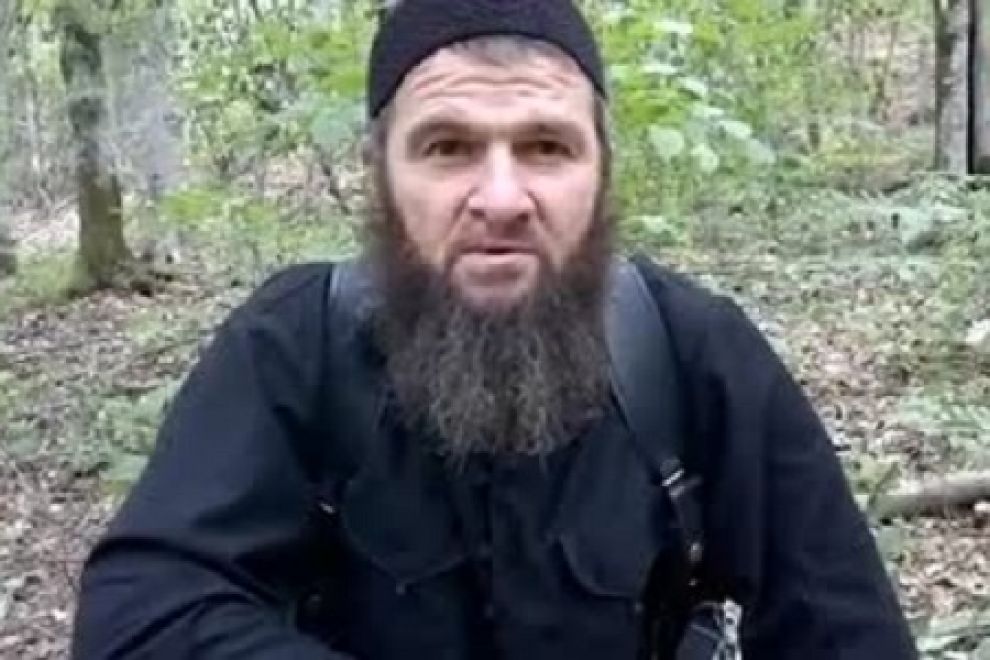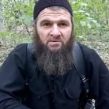
Post-Mortem Photograph and Video of Doku Umarov Emerge
Publication: Eurasia Daily Monitor Volume: 11 Issue: 135
By:

Chechen president Ramzan Kadyrov posted a photograph of the dead leader of the North Caucasus insurgency, Doku Umarov, on his personal Instagram page, while the militants provided their official version of the death of Umarov, who headed the insurgency from 2006 to 2013. Kadyrov deleted the photograph of the dead Umarov from his Instagram account just one day after its publication (Instagram, July 19). However, his comments on the photograph remained on the Internet, and they read as follows: “I earlier stated that Doku Umarov was killed in a special operation. However, various government agencies and media hastily expressed their doubts about it. They were saying that there was no corpse. We had proof beyond doubt that he was eliminated. Later, Umarov’s death was officially confirmed. Now, for those who would like to think that this rat is still alive, we can show him to them after his death” (newsru.com, July 19).
In fact, Kadyrov’s reproach to those who doubted his announcement of Umarov’s death was addressed to specific individuals. One in particular was Russian Prime Minister Dmitry Medvedev, who had stated that as long there is no corpse of the leader of the militants, he should still be considered alive (ria.ru, March 18). The head of Ingushetia, Yunus-Bek Yevkurov, had also reiterated that he had no information about Doku Umarov’s death (vm.ru, March 21). So this was Kadyrov’s way of responding to those who, in Kadyrov’s view, were trying to deprive him of his victory.
In reality, the authorities learned about Doku Umarov’s death accidentally from intercepted communications between the rebel emirs of Dagestan and those of Ingushetia and Kabardino-Balkaria (Kavkaz Uzel, January 17). In April 2014, the director of Russia’s Federal Security Service (FSB), Alexander Bortnikov, confirmed the death of Doku Umarov at a meeting of the National Antiterrorist Committee (NAK), which he heads (vesti.ru, topwar.ru, April 8).
Even though Kadyrov stated that he received the photograph of the dead Umarov (tltgorod.ru, July 19) from his personal sources, that claim is dubious. Umarov’s photograph, which shows him after being readied for burial, was first published on the Chechen online forum Adamalla (adamalla.com, July 20). Moreover, as proof that Kadyrov had no sources of his own within the insurgency, the militants published the video of the funeral ceremony on YouTube (since removed). This video provided a glimpse of the insurgent leader’s death, which was guarded as a secret for a long time. Comments by Emir Hamzat (40-year-old Aslan Batyukaev), who assumed command of the Caucasus Emirate after Umarov’s death, indicate that Umarov was poisoned through food supplies. “Several young brothers came from the neighboring jamaat. They had some food with them. This took place on the road to Jeirakh in Ingushetia. They had taken some food from an Ingush, Magomed Kostoev, although we do not think that is his real name. When they came, Doku Umarov had a bite with them. This was on August 6, 2013. Today it is September 7, 2013. Today at dawn, Doku died” (kavkazcenter.com, July 20).
According to Emir Hamzat, everyone who ate the food that originally came from Kostoev died. Four people from the Ingush jamaat died on the same day, but Doku Umarov struggled for a month because he ate very little of the food. Emir Makhran (39-year-old Makhran Saidov), commander of the militants in the central part of Chechnya, in Vedeno and Shali districts, who attended Umarov’s funeral, stated that the militant leader’s death was not the result of a special operation by the FSB or Kadyrov’s people. Rather, it was an accident, as the fact that these four militants from the Ingush jamaat carrying poisoned food crossed paths with Doku Umarov at all seemed to be little more than a coincidence. In other words, the FSB recruited Kostoev, but neither the FSB nor Kostoev could have known that the Ingush jamaat’s members would share the food with Doku Umarov. It is also unclear who in the FSB was awarded for killing Umarov.
Poisoning food supplies is one of the main methods used by the Russian FSB to eliminate militants (newsru.com, July 10, 2010). That is why people who supply food to the rebels are normally trusted individuals. No militant will take food from an unknown individual who simply expresses his wish to help the rebels. Since 2010, the Ingush jamaat has been under the influence of moles who were planted among the militants. Everything started at the time of the arrest of Emir Magas (ria.ru, June 10, 2010), the death of Said Buryatsky (newsru.com, March 4, 2010), and other multiple losses in the Ingush jamaat (inghuman.org, 2010)
Some outstanding questions remain about the Umarov funeral video released by the militants, however. The video of Umarov’s burial is dated September 7, 2013, but Emir Makhran is dressed in a warm jacket and others around him are also wearing heavy clothes. In the village of Assinovskaya, which is closest to the possible site of Umarov’s burial, the temperatures on September 6–8 were within the range of 19–22 degrees Celsius (gismeteo.ru, September 7, 2013). A military special operation against the insurgents was apparently also taking place in the area at the time of the funeral, as the sounds of flying jets can be heard in the video.
The new video from the Chechen militants confirmed what was already known, but it did not help to clarify the internal decision-making process within the Chechen insurgency. The death of Doku Umarov had no impact on the general situation in the resistance movement; on the contrary, it confirmed the view that the jamaats are able to operate without a central leadership. They need central leadership as a symbol of unity of all the militants, but not as a mechanism for functioning and carrying out their operations. This quality of the resistance movement poses a danger to the Russians as it keeps the movement formally united but in reality decentralized and thus more difficult to decapitate.




